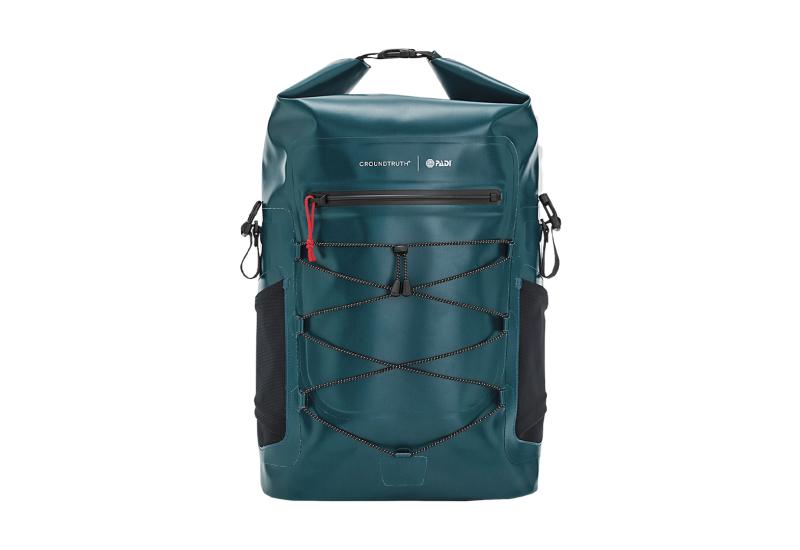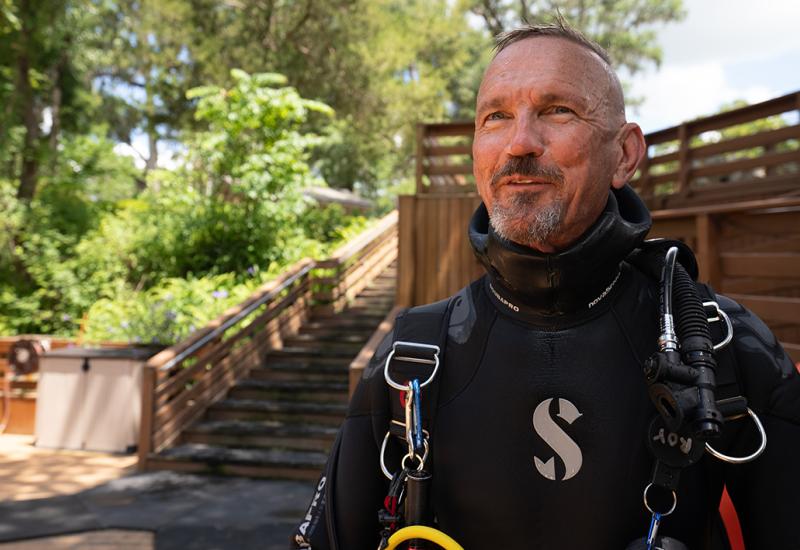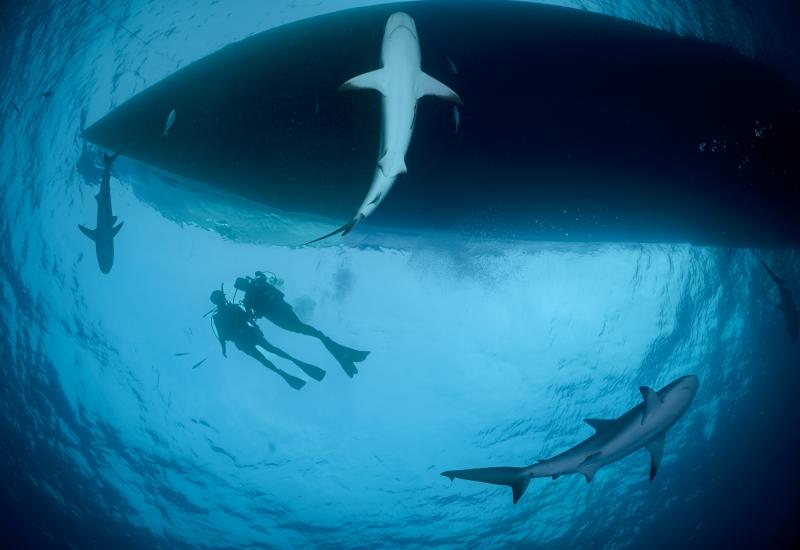Tankless Diving or How to Get Anyone Interested in Scuba Diving
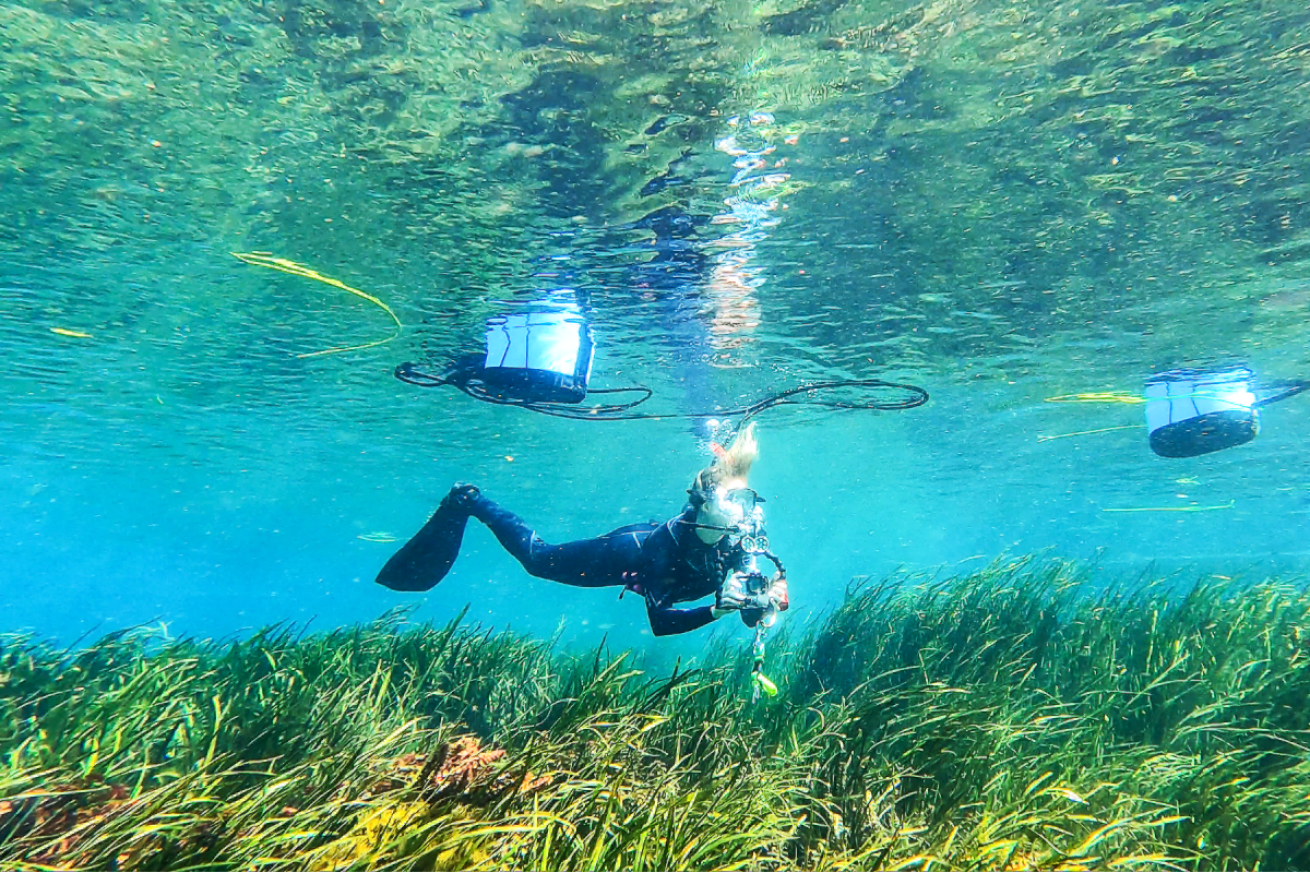
Image Courtesy of Blu3The author tries a BLU3 Nomad for the first time on her first-ever dive in Rainbow Springs State Park, Florida.
Most of the time accessing dive sites is straightforward. You giant stride from a boat. You back roll off a zodiac, you waddle inelegantly through the surf and submerge. Sometimes you have a bit of a walk to the water's edge. When that happens, your back aches and you ready yourself to submerge as fast as possible, forehead beaded with sweat, patience depleting at a steady freefall.
We won’t even talk about the sites that require an actual hike because, unless you’re an expedition cave junkie with a team to help you haul your heavy gear, you’re not going to be backpacking that 35-pound-heavy aluminum 80 on a one-mile hike—not unless there’s a pot of gold at the end of the trail.
Until recently, I thought locations off the beaten path were all but inaccessible. Long hike to a mountain lake? No way I can bring my dive gear. Remote island with no dive shop? Forget it, no diving, right?
Wrong. BLU3’s backpack-sized tankless dive system changes everything.
Related Reading: The Best Scuba Diving Accessories in 2022
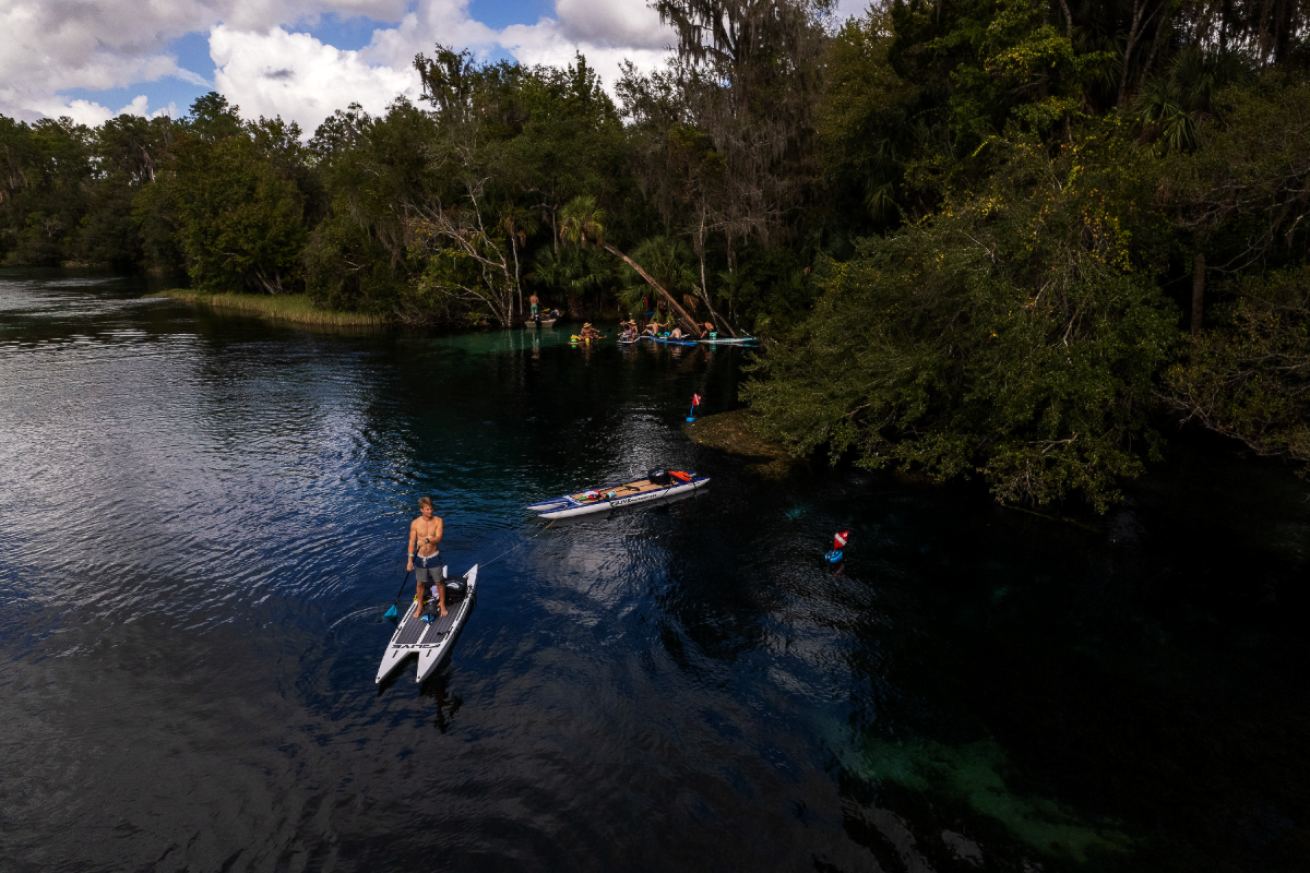
Image Courtesy of Blu3Blake waits for Ariella and Candice to surface, enjoying the Rainbow Springs State Park sun.
I Tried Tankless Diving and Here’s How It Went
The day after DEMA 2022, the BLU3 team, David Golubev and Blake Carmichael, invited Scuba Diving magazine and PADI Club to join them on a paddle and dive trip at Rainbow Springs State Park. Not only would we get an opportunity to experience LIVE Watersports' hardy paddleboards, but we’d get to try BLU3’s innovative tankless diving systems—the Nomad and the Nemo.
Though I’d never seen tankless dive gear in action, the benefit of this system—so small it fits in a backpack—was obvious. It was light and portable. Not only would it give people access to hard-to-reach bodies of water but it would also serve as “a gateway drug to scuba diving” given you only need to take an online course to learn how to dive it safely.
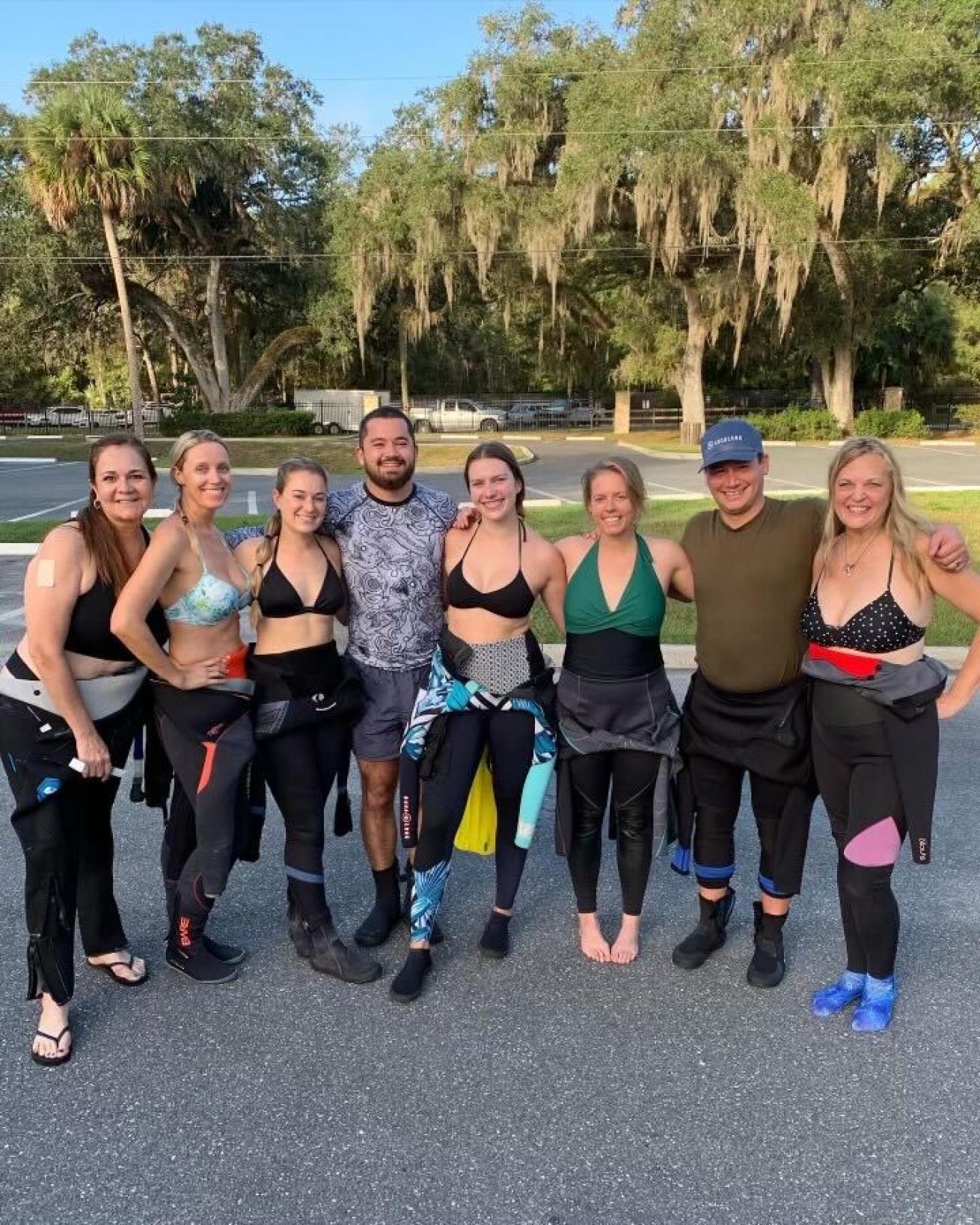
Ariella SimkePADI Club and Scuba Diving magazine staff at Rainbow Springs State Park.
A Day of Firsts
A merry band of water rats, we arrived with naught but wetsuits, fins, weights, masks and snorkels. Most of the group would board the Rainbow River Water Taxi for a ride to their “put in” point, where they’d enter the water and either snorkel or dive back using the Nemo, rated to 10 feet of depth. Only two of us would get the chance to try both the paddleboards and the Nomad—BLU3’s system rated to a depth of 30 feet.
On the dock, I waved goodbye to my team aboard the water taxi and turned to Blake.
“Right, how does it work?” Though I'd completed the online training, as a scuba diving instructor myself, I wanted to know how Blake, the CEO of BLU3, explained this system in the field.
Related Reading: A Year-Round Guide to the Best Diving in Florida
The short of it was: mount the paddleboard, sit and enjoy the ride. Blake would be doing all the work ferrying me up the river, right up until the Nomad and I were to join forces and dive back.
I tried my best not to think about the extra ten pounds I’d put on over the course of my last two travel assignments, and returned his easy smile, jokingly saying he’d made a poor choice in picking me instead of my smaller counterpart, Ariella, who had boarded another paddleboard just across from us.
Fortunately, a core selling point of the LIVE paddleboard is that it is virtually untippable. Both Blake and I as well as our Nomad companion were just fine.
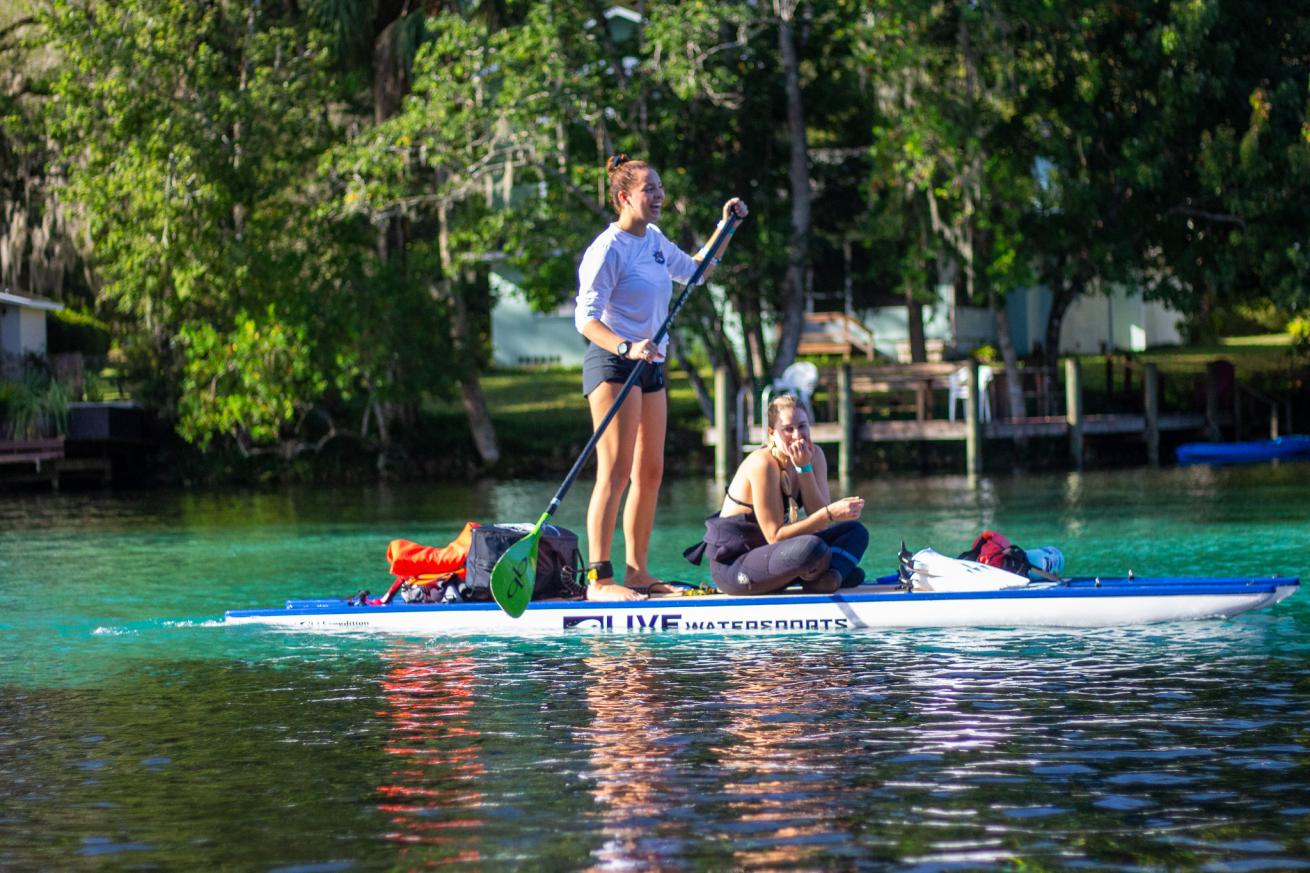
Image Courtesy of Blu3Getting exercise on the way to the drop in point!
As we (Blake) rowed, I took in the surrounding Florida environs, still so new to me just five months after moving from the Pacific Northwest. Instead of fir trees, an overcast sky, and pickle-green water, Florida’s river’s sparkled in the sunlight, clear as glass. Long spotted fish with avian beaks—I’d later learn are called gar—moved calmly below the surface, and tropical foliage, ferns and mangroves, spilled into the water.
When we hit the turnaround point, Ariella and I geared up. The entire process took a minute. Blake handed me a weight belt stacked with hot pink one-pound slugs and then showed me how to put the Nomad’s harness on. I positioned my mask on my face and slipped into the welcome cool.
As I waited for Ariella to join me with her Nomad, I decided to test my own out. With the compressor floating in the water next to me, I turned the regulator on and took a breath. If I’d been on land I would have jumped! The system came to life with a rattling buzz and gave me the breath of air I’d requested, shuddering each time I inhaled—so familiar and yet so strange too. It’s not often scuba gear leaves me feeling somewhat out of my element, but when it does, it’s a welcome feeling—a challenge for my brain, a new adventure.
Unless you’re a diver, you won’t notice anything out of the ordinary. If you are a diver, you’ll feel the difference in breathing.
The battery-operated compressor affects breathing effort. The lower the battery life, the harder it gets to draw a breath of air. So, running out of air is never really an issue. Instead of checking a pressure gauge, you pay attention to the feedback from your regulator. BLU3 explains it better in their FAQ.
As a safety precaution, it’s recommended anyone diving with a Nomad or a Nemo, carry a small Spare Air with them. With an adapter, the Spare Air canisters can be filled from any scuba tank.
Once Ariella joined me, we bungeed our long, trailing hoses into neatly packed loops, creating somewhat shorter tethers. If it got deeper than 15 feet we’d pop to the surface and let out more hose.

Image Courtesy of Blu3Ariella fins through the Rainbow River channel, calmly enjoying her BLU3 Nomad experience.
Ariella and I were a good match in the water, moving at the same speed, writers’ eyes devouring the underwater scenery.
Diving with no more gear than a weight belt was liberating. I stretched my arms out like a bird and skimmed my fingers through the long algae-covered grass to either side of me.
The river had carved out a clear channel and as we enjoyed the drift back, I couldn’t help but reach for the GoPro clipped to my weight belt. This experience needed capturing.
Related Reading: 10 Tips for Taking Great Videos Underwater
Ariella was a good subject for the camera, her white fins and red slug weights standing out against the green-blue backdrop and her long ponytail, segmented as it was, made her look like a blonde version of Lara Croft, her adventurous personality a perfect match. An avid freediver, I was curious to know what she thought of this system—how did it feel to her, already so used to luxuriating in the lack of dive gear.
Before long Blake and another diver joined us. They explored with even more confidence than we did, looking as natural as the native fish curious enough to follow our meandering—small schools of bluegill and the occasional grumpy looking largemouth bass.
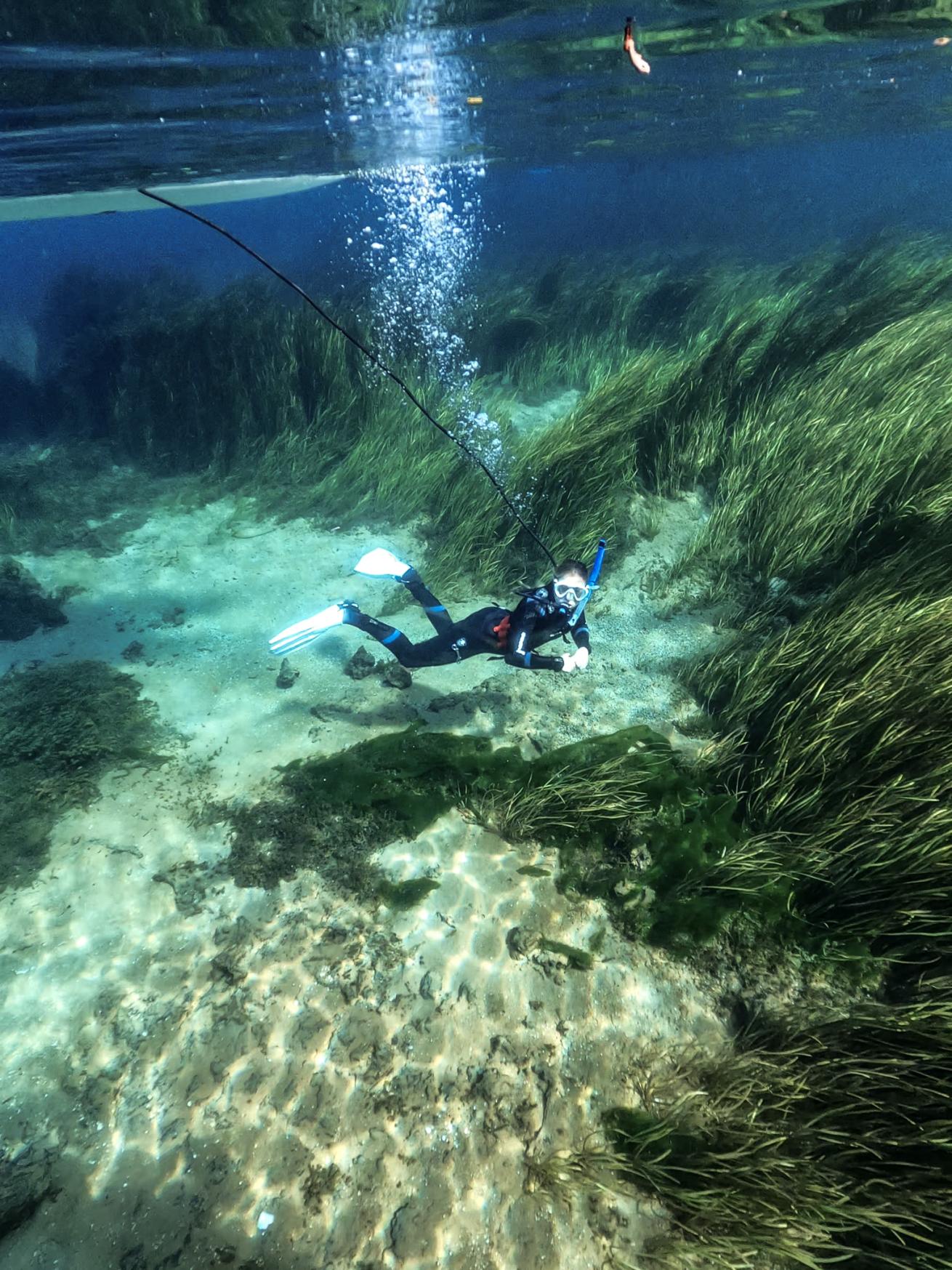
Image Courtesy of Blu3Rainbow Springs is a beautiful peaceful dive site and a perfect place to try new equipment.
Ariella and I swayed with the river grasses, dipping into larger, deeper basins. At one point we saw water gushing out of huge hole, perhaps even a cavern. After at least 45 minutes I began to feel the cold and I noticed breathing was getting harder—my Nomad’s battery life was drawing down.
I decided to call it quits and signaled to Ariella that I was cold. We returned to the surface to find our team on paddleboards behind us; they were tracking the bobbing blue Nomads with bright red dive flags atop them.
“How was it?” a colleague asked as I clambered onto the dock.
It took a second for me to think of a response.
“It’s like scuba but it’s also not. It’s a game-changer.”
I suspect that one day I'll come across this system world over. Instead of "snuba" tours, people will be doing guided BLU3 tours. I’ll watch a bachelorette party or a family opt-in to the experience and I’ll maybe even glimpse their their first dive, their astonishment at the existence of a world they never imagined until now.
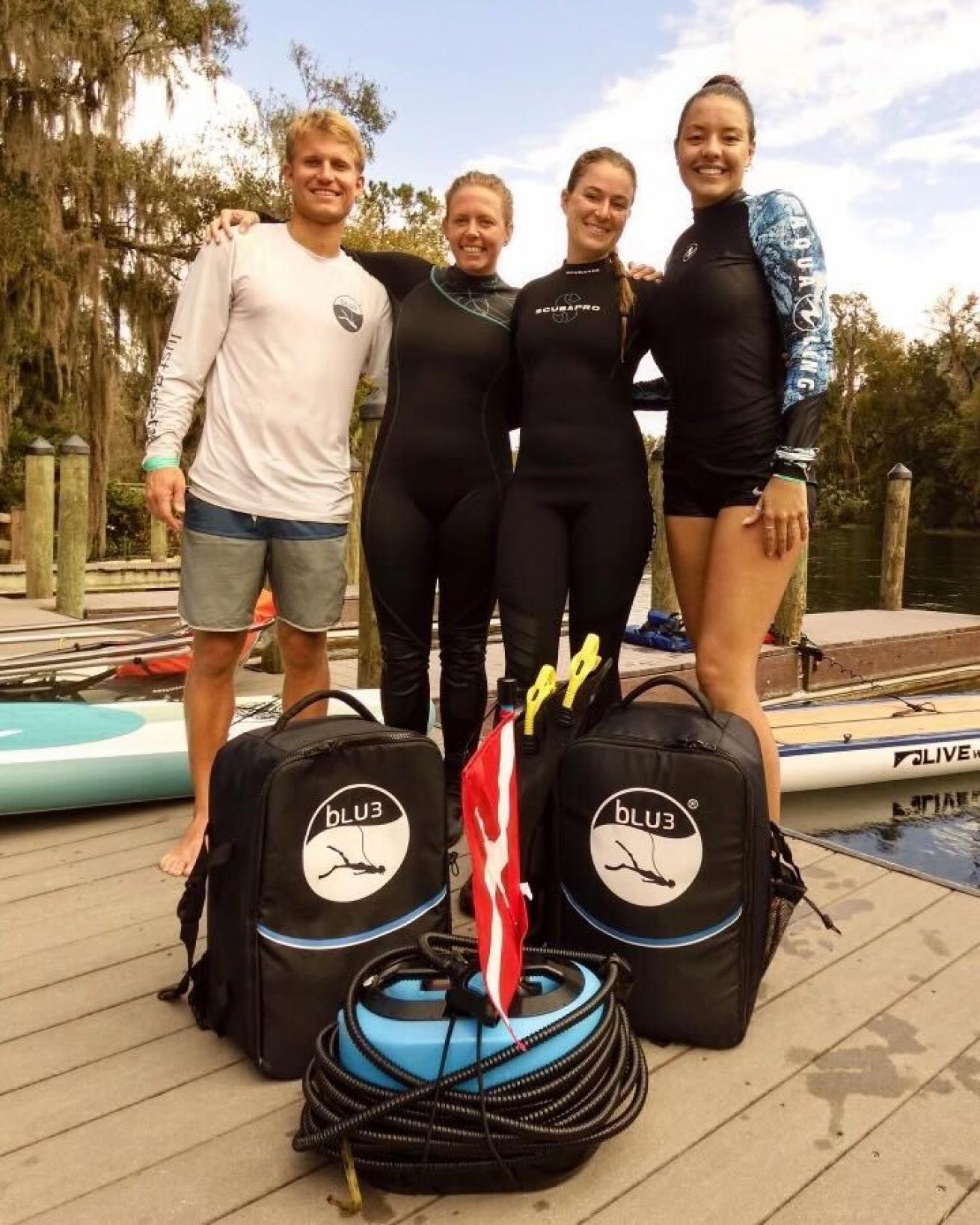
Ariella SimkeBLU3 and Scuba Diving magazine.
Need to Know:
The dive site: Rainbow River Springs State Park.
Water temperature: 72 degrees, pretty much year-round.
Average depth: 10 to 20 feet.
What do BLU3’s tankless diving systems cost? The Nemo starts at $1,299, and the Nomad at $1,999. Prices were up-to-date at the time of writing.
What other accessories will you need: Fins, mask, snorkel and weight belt. We recommend Bright Weights as they’re easy to adjust. 1.1lb slugs can be popped in and out at the drop of a hat.

